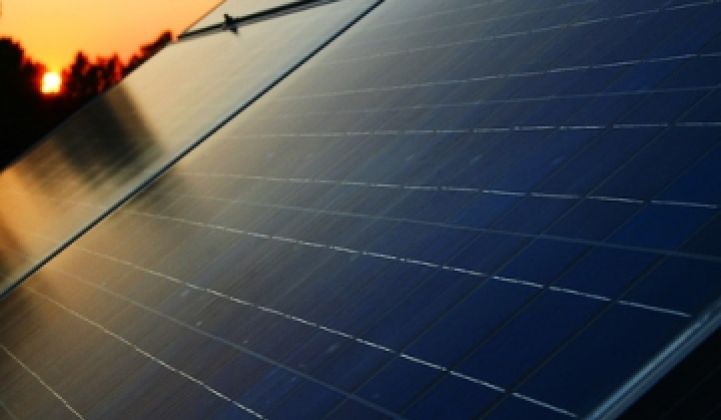Abound Solar wants to gallop past competitors right out of the gate.
The two-year-old company can make cadmium-telluride solar panels at under $1 per watt several months from now, a figure that will be comparable to what its much larger competitor, First Solar, has achieved, said Pascal Noronha, CEO of Abound Solar.
It took First Solar about four years of commercial production and multiple factories to achieve the low cost by the end of 2008 (see First Solar Cuts Production Cost to $0.98 Per Watt). Its low-cost claim has made it the company to beat. Can Abound Solar really do it?
The startup, based in Fort Collins, Colo., plans to start commercial production next month. It held a factory-opening ceremony Tuesday and lined up environmentalist Robert F. Kenney Jr. and Hermann Scheer as speakers. Scheer is the chairman of the World Council for Renewable Energy and a member of the German parliament.
"Three or four months from now, when we are in reasonably steady production, our manufacturing cost will be less than $1 per watt," Noronha said. "It will be in line with First Solar's."
The new factory in Longmont, Colo., can accommodate equipment to produce 200 megawatts of solar panels per year. Abound Solar plans to start with a 65-megawatt line, Noronha said, and add a second line of the same size by the end of this year.
Noronha said the three company founders, inspired by how quickly and cheaply Anheuser-Busch churns out millions of cans of beer a day, worked hard at fine-tuning the manufacturing process for making the solar panels efficiently.
"It's a completely automated manufacturing process that from the time a piece of glass starts at the beginning of the line to the time that it exits as a finished product," Noronha said. "The time it takes for that piece of glass to start to the time the piece of glass exits as a PV module is 120 minutes."
It would take several hours or longer for other solar panel companies to do the same, said Russ Kanjorski, vice president of marketing at Abound Solar.
First Solar, based in Tempe, Ariz., said it could produce a 2-foot by 4-foot panel in "less than three hours," according to its 2008 annual report. In other times, it had claimed that the production time per panel is around two and a half hours, reported the IEEE Spectrum, a magazine of the Institute of Electrical and Electronics Engineers, a nonprofit, professional group.
Professor W.S. Sampath and his students and later research colleagues Kurt Barth and Al Enzenroth at the Colorado State University founded Abound Solar (called AVA solar then) in January 2007. Sampath still works at the university while Barth and Enzenroth now work for Abound Solar.
The startup began by making a 3-inch by 3-inch prototype module at the university lab. Abound Solar never set up a full pilot factory. Instead, it focused on improving the process of depositing cadmium and tellurium, the two active ingredients for power generation, until it could satisfactorily make a 16-in by 16-inch panel and then a 2-foot by 4-foot panel, Noronha said.
When Abound starts mass production, its panel should be able to convert 10 percent of the sunlight that hits it into electricity, Noronha said.
That's lower than what some other thin-film solar panel makers can do, and a lot less than leading crystalline silicon panel makers such as SunPower Corp. in San Jose, Calif. But Kanjorski noted that the efficiency is better than the 8 percent to 9 percent panel efficiencies being achieved currently by panels with a layer of amorphous-silicon, another type of thin-film solar technology.
Like other thin-film makers, Abound Solar's pitch is that it can make panels cheaper than crystalline silicon panel producers because silicon historically has commanded high prices. Kanjorski said the startup's panels also perform well in low light, a claim echoed by other thin-film panel makers.
The company is targeting the commercial and utility markets. It has signed sales agreements, said Kanjorski, who declined to name them.
Since inception, it has raised about $150 million from private equity firms and the U.S. Department of Energy, which provided $3 million in 2007 to help the company commercialize its technology. It closed a $104 million round last year from investors including Invus Group, Doll Capital Management and Technology Partners (see AVA Solar Gets $104M).
The company announced changing its name to Abound Solar earlier this year because the old name didn't have any particular meaning or back story that would make it a good brand, Kanjorski said.
Abound doesn't plan to raise more equity financing, Noronha said.



